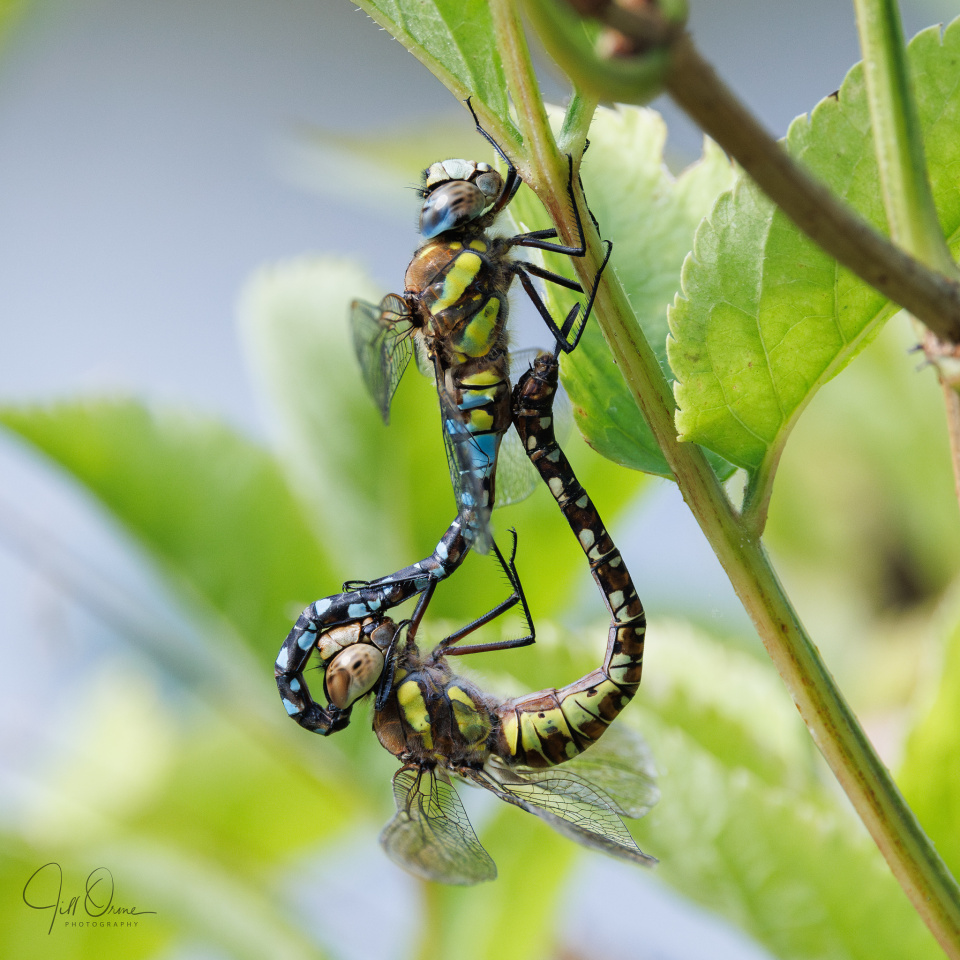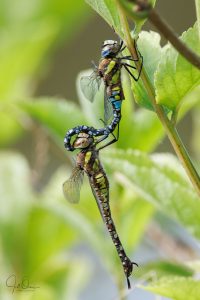Firstly, thanks to everyone who said nice things about the news I shared yesterday: I very much appreciate your generosity and all-round niceness!
After all that excitement I was keen to get back to normal invertebrate service today, but what with one thing and another it was late lunchtime before I made it out of the house. The light was patchy and it wasn’t especially warm, so I didn’t have high hopes of finding many dragons, but I decided to go to Croome anyway, and walk the whole length of the artificial watercourse. The ‘river’, as expected, produced only a handful of Migrant Hawkers and Ruddy Darters, all of them highly skittish and most hunting up at tree canopy level, but I had a pleasant walk and saw some nice birds, including a charm of Goldfinches, a pair of Stonechats, and an unexpected Red Kite that was being mobbed by Jackdaws.
I was a bit dismayed to discover that the Carriage Splash Pool has been substantially drained so that work can be carried out on the side walls and spillway, and there were no Willow Emerald Damselflies to be seen in the area. I hope that this work will have finished by the time any existing Willow Emerald eggs hatch in the overhanging tree branches, because the larvae need to be able to drop into water, and unless the pool has been refilled by then an entire generation of a species that’s still uncommon in Worcestershire could be lost.
From the carriage splash – currently a carriage causeway – I walked back past the house to the lake, where I quickly spotted a pair of Ruddy Darters in cop, but not much else. Once again there were a few Migrant Hawkers flying high overhead, but none were at a sensible height for photography, and I decided to call it quits and head back to the café for a drink before setting off home. I’d actually walked past these Migrant Hawkers, which were hanging from a low sapling on the eastern side of the lake, when my subconscious coughed and tapped me on the shoulder, and I thought: Odd! That looked a bit… dragony…? Backing up a few steps and turning the macro binoculars on the scene, I realised what was going on and felt a sharp frisson of relief that at least part of my brain had been focused on the job in hand.
Migrant Hawkers copulate for quite a long time, which allowed me to choose my angle and work myself into a good position to photograph them. Because they were so low down I ended up sitting on the bank a little way above them, then bending double with my forearms on my knees to achieve the best possible focus. A few years ago I’d have stretched myself out full-length on my front to get this shot, but these days I’d be worried that I might find it too difficult, or at least too embarrassingly effortful, to get myself upright again afterwards.
My second photo shows the impasse the pair reached after the female broke the mating wheel. She wanted the male to release her, and fluttered around in agitation trying to get away, but he wouldn’t let go, and in the end they flew off in tandem to the other side of the lake, where I lost sight of them. Female Migrant Hawkers usually oviposit alone, and clearly prefer to do so, but sometimes the males insist on keeping hold of them to prevent rival males from intervening until the eggs they’ve fertilised have been laid. I’ve witnessed Migrants performing tandem oviposition before at Croome, and it looked very much as though this was what was about to happen today.








